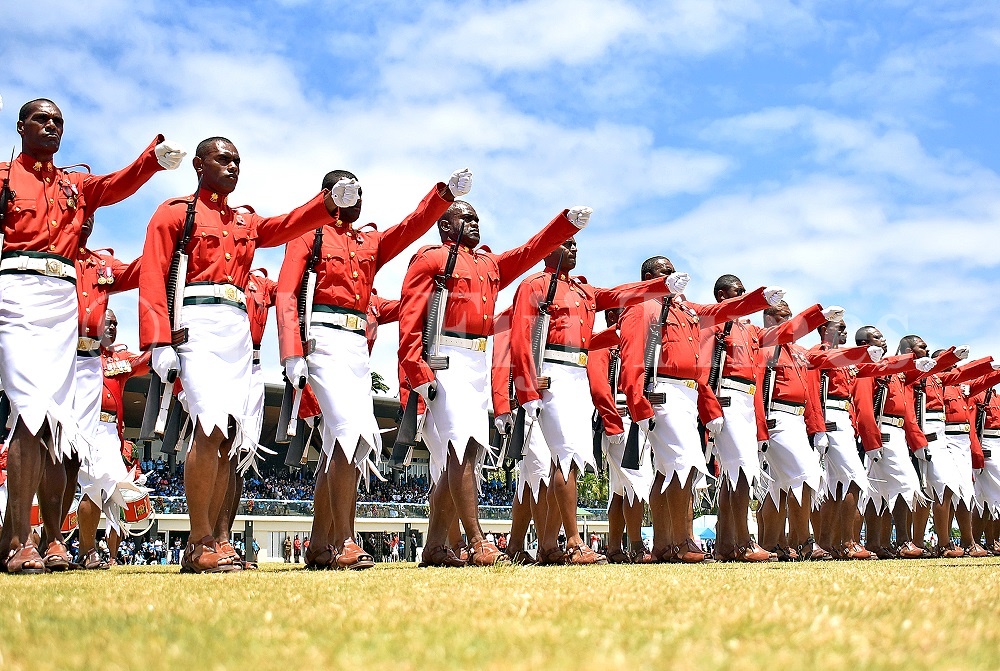After attending the 53nd Fiji Independence Celebrations at Albert Park and the State House I questioned whether we are truly independent or are we still under the British colonial culture.
I thank the Hon Pio Tikoduadua and First Lady Madam Vilomena Katonivere for inviting me to the celebrations and I felt honoured as a Fijian to be invited. I looked forward to the celebration with bubbling excitement.
I wore a bula shirt to show my Fijian pride. My grand-nephew and I hurried down to Albert Park where we joined my sister and her son. We were one on the first to be seated at the pavilion.
The celebrations started with the military band leading the march downtown to Albert Park. The chief guests, the Hon. Prime Minister, Sitiveni Rabuka and the President of the Republic of Fiji, His Excellency Ratu Wiliame Katonivere arrived.
By this time a thick blue line of Fijian people surrounded Albert Park ground waving their noble banner blue flags. It was a beautiful sight to see many people united under their nation.
Around me were government officials who were enjoying the events as they unfolded. I waited in anticipation for the military parade. The master of ceremony announced that the military band will perform the trooping of the colour which was last held in 1998.
Trooping of the colour
What is the trooping of the colour? The master of ceremonies explained that the military used these coloured flags so that soldiers could easily spot their unit when they were on the battlefield, because it used to be quite easy to get lost in battle.
Keeping an eye out for their own regiment’s colours was an easy way to keep everyone together. My further reading shows that historically, the trooping of the colours became part of the celebration of the British Monarch’s birthday for over 260 years.
Every June, there is a public celebration of the reigning monarch’s official birthday called Trooping the Colour. I watched in anticipation as the trooping of the colour was performed.
As I watched, a feeling of disappointment swelled up within me as I tried to make the connection between the trooping of the colours and Fiji Independence Day. I began jotting down my observation, thoughts, and feelings on my phone.
My thoughts: What is the significance of the military parade trooping of the colour got to do with independence? We are celebrating independence, but we are still doing something that belongs to the British colonial era.
Where is the Fiji independence story? Have we really moved beyond British colonialism to independence? My feelings: I was frustrated and disappointed that we are denying our younger generation of Fiji’s history.
Beating retreat
In the evening I attended the independence reception at the State House. One the main events of the reception was the beating retreat. The beating retreat is a military ceremony that dates to an order given to the army of James II of England in 1690 in the early days of organised warfare.
The troops beat drums and paraded the streets to mark the end of a day of combat, as well as lowering the flags and closing the gates. The beating of drums is where the name beating retreat comes from.
I looked forward to hearing some stories or speeches on Fiji independence. The guests were mostly diplomatic corp personnel, government officials, and military officials.
Where are the Fijian people. I thought this was a Fiji Day celebration. I was disappointed and did not stay long.
The Fijian amnesia
There is something very important missing from our Fiji independence celebration, namely the colonial to independence transition story. Amnesia is a loss of memory. Pope Francis said that a society without a memory is heading for
disaster.
Historians state that history can have a profound effect on our sense of ourselves.
History tells us how we might live in the world today and not repeat the mistakes of the past. Some have said that history for a society is like memory for an individual. Without memory, the individual is isolated, cut off from where he has been and who he is.
History gives us a sense of where we have come from and how we became what we are. A historical awareness gives us the best guide for shaping the present and the future.
The renowned theologian, Helmut Richard Niebuhr stated:
… where common memory is lacking, where men (sic) do not share in the same past there can be no real community, and where community is to be formed common memory must be created …. The measure of our distance from each other in our nations and our groups can be taken by noting the divergence, the separateness and the lack of sympathy in our social memories. Conversely, the measure of our unity is the extent of our common memory.
I have a humble request to the organisers of Fiji Independence Day that for the 54th Fiji Day Independence Day Celebration include some of the following:
- include stories of colonialism and independence;
- re-writing Fijian history;
- include local (meke, poetry, stories) entertainment especially in the main part of the program; and
- most important, make it a real Fijian independent experience.
God Bless Fiji.
- PETER LOY CHONG is the head of the Catholic Church in Fiji. The views expressed in this article are his and not necessarily the views of this newspaper.



